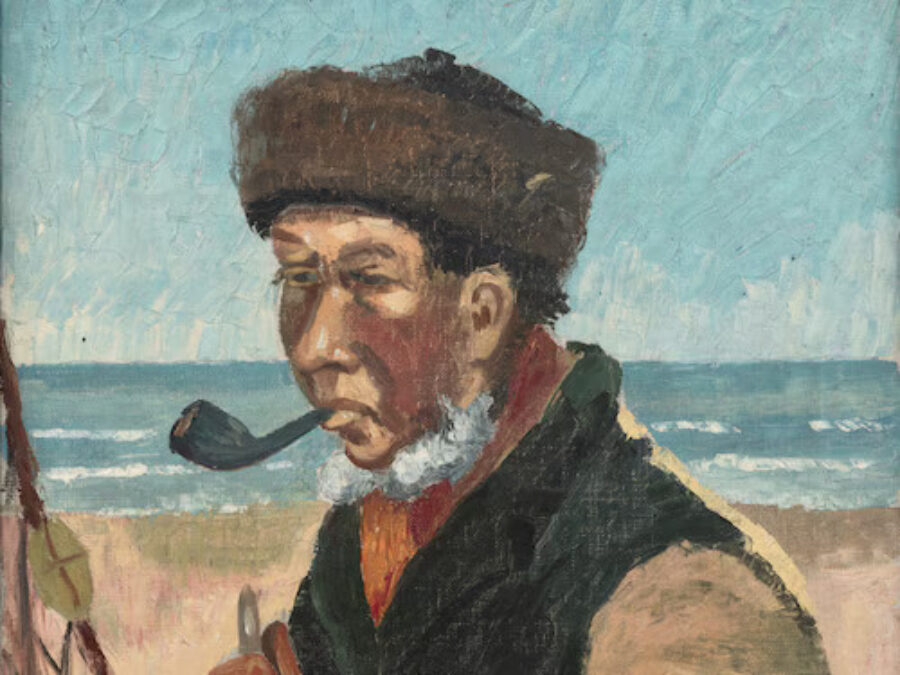In a shocking development that has captivated the art world, New York-based LMI Group International has put forward a controversial claim regarding the authenticity of a painting found at a garage sale in Minnesota. The company insists that the artwork, a portrait of a fisherman entitled Elimar, is a previously unknown piece by the iconic Dutch artist Vincent van Gogh, dating from 1889, the year before his death. This announcement has sent ripples of intrigue throughout the art community, but it has also sparked considerable skepticism among established art experts.
LMI Group, which specializes in identifying and authenticating lost or forgotten works of art, claims its rigorous investigative process has uncovered the evidence needed to confirm the painting as an original van Gogh. The company assembled a team of over 20 experts, including chemists, curators, and art historians, to investigate the work, which it bought in 2019 for an undisclosed sum from an anonymous antiques collector. The previous owner had purchased the piece for under $50 at a local garage sale. Their conclusion is documented in a 458-page report that makes the case for Elimar being an authentic van Gogh.
However, several prominent art scholars have vehemently disputed LMI Group’s attribution. Wouter van der Veen, a noted specialist in van Gogh’s works who has previously worked with the Van Gogh Museum in Amsterdam, is one of the most vocal critics. Van der Veen argues that the painting’s style, technique, and use of color are all inconsistent with van Gogh’s established methods. He points out that the impasto technique, brushstrokes, and lines seen in Elimar differ significantly from the artist’s recognizable style. Furthermore, van der Veen suggests that LMI Group’s motivations may be driven by the desire to attract a high market value for the painting, which could fetch upwards of $15 million. This figure, according to a report from the Wall Street Journal, is based on the belief that the painting, if authentic, could rival some of van Gogh’s most expensive works, such as the $117 million sale of Portrait of Dr. Gachet in 2022.
The Van Gogh Museum, which first dismissed the attribution in 2019, has reiterated its stance, declaring that Elimar does not match the distinctive characteristics of van Gogh’s oeuvre. The museum’s refusal to even evaluate the painting in person has been a point of contention for LMI Group, which criticized the institution for quickly rejecting the evidence presented in its report without offering a comprehensive explanation.
Some scholars suggest that the work could instead be the creation of Henning Elimar, a lesser-known Danish artist whose name is coincidentally similar to the title of the painting. Elimar, who passed away in 1989, was known for his pastoral landscapes and subdued portraits, making him a possible candidate for the creation of Elimar.
LMI Group, however, firmly rejects this theory, arguing that the Danish artist’s style bears no resemblance to the painting in question. According to the report, there is no evidence of 20th-century materials in the painting, and the colors used in Elimar are consistent with those found in van Gogh’s later works. The company also ties the name “Elimar” to a character in Hans Christian Andersen’s 1848 novel The Two Baronesses, which they claim may have inspired van Gogh.
While LMI Group’s investigation includes scientific analysis of the painting’s materials, including pigment and dye testing, critics like van der Veen are not convinced. One of the most contentious points of the report involves the identification of PR50, a pigment patented in 1905, which some experts suggest may have been present in earlier forms before its official patent. The scientific findings have been met with skepticism, with some experts pointing out that such pigment analysis alone cannot definitively determine the artist behind the work.
Art historian Bendor Grosvenor, who has uncovered several lost Old Master paintings in his career, has questioned why the claim is receiving so much media attention despite the doubts surrounding its authenticity. He speculates that Elimar could actually be a copy of a work by Danish artist Michael Peter Ancher, which would further undermine LMI Group’s claim.
In the end, while LMI Group’s report may offer an ambitious and thorough case for the painting’s attribution to van Gogh, the evidence remains far from conclusive. The art world will no doubt continue to debate the legitimacy of Elimar for years to come.









